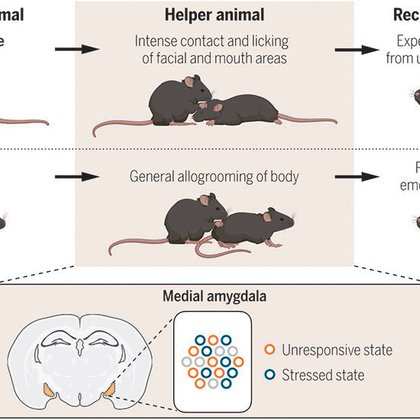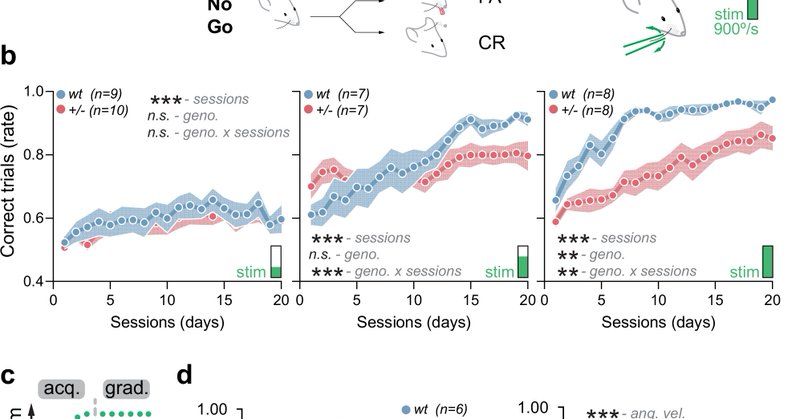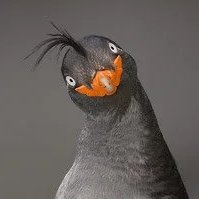
Nazim Kourdougli
@n_kourdougli
Followers
198
Following
1K
Media
6
Statuses
595
Postdoc in Neurosciences at UCLA. Dissecting neural circuits during early postnatal development. Passionate about art and gastronomy. He/him.
Joined November 2017
🚨Thrilled to see my main postdoc work now published @NeuroCellPress! 🪄 https://t.co/esEUYd5y4J 🧵1/6👇
cell.com
Kourdougli et al. use all-optical in vivo approaches to show that parvalbumin interneurons are hypoactive and decoupled from excitatory partners in the developing neocortex of fragile X syndrome...
3
9
43
Now published in @NatureComms! Very cool story from a former PhD student from the Portera-Cailliau’s lab!
A tour de force by Trishala Chari, PhD in C. Portera-Cailliau lab dissecting social touch brain circuitry in autism using neuropixels recordings in S1-Striatum-BLA!
0
0
2
Thrilled to be part of this story, describing Epac2 as a new therapeutic target in FXS mice using a combination of transcriptomics, in vivo calcium imaging and behaviors from the C. Portera-Cailliau lab!
https://t.co/QGvdq8T1Qv Excited to share my postdoctoral work! We mapped how loss of FMRP alters excitatory and inhibitory neurons in Fragile X Syndrome (FXS), the leading monogenic cause of autism. Huge molecular divergence — and a new therapeutic target! 🧵
0
0
0
Excited to share our preprint led by @ainchung & Jason Alipio showing how few immature adult-born DGCs preferentially recruit inhibition of CA2 and CA3 to disproportionately affect hippocampal network properties and social memory. We began by asking 1/n https://t.co/JrxeQtkV8j
2
7
46
We are excited to share our latest work showing that mice display rescue-like prosocial behavior toward unresponsive partners. @ScienceMagazine
https://t.co/Jzwna46rFy
science.org
Humans often take actions to assist others experiencing unresponsiveness, such as transient loss of consciousness. How other animals react to unresponsive conspecifics—and the neural mechanisms...
26
75
260
New paper from providing insight into how a gene variant that causes cognitive impairment (Syngap1 haploinsufficiency) does so through impairing how sensory and motor signals converge in cortex to support perception and adaptive behavior. @cureSYNGAP1
https://t.co/hdKo7j68Nw
nature.com
Nature Communications - Whether and how highly penetrant NDD (neurodevelopmental disorder) genes such as Syngap1 regulate sensorimotor integration are not fully understood. This study shows that...
1
8
28
Our latest study - psilocybin evokes structural neural plasticity, and we wanted to know how this maps onto pyramidal cell type-specific circuits to produce behavioral effects. 🍄🔬🧠 Link to @biorxivpreprint: https://t.co/xvQh1JmBPf Led by Ling-Xiao Shao and @ItsClaraLiao.
15
49
309
Paper is out! @NatureComms Mapping dense neural projections at the single-cell level is challenging—but we tackled it with axonal BARseq, a new technique that maps long-range projections from >8000 neurons in a single brain. 🧠 @TonyZador
https://t.co/Mty01CnBsg
0
9
14
We have a great lineup of speakers for our first Neurodevelopmental symposium at Northwestern. Virtual registration option available. Please signup. https://t.co/xUwfuKaCrJ
sites.google.com
0
13
30
The first social behavior of a mammal infant is to form a social bond with the mother. In this work, we found that somatostatin-expressing neurons in the ZI of preweaning mice respond to social interactions with their mother. Here's a video highlighting our main findings.
So happy to share our new work that is now out @sciencemagazine: We show how neurons in the mouse zona incerta (ZI) modulate infant social behaviors and learning. This work was led by the AMAZING graduate student Yuexuan Li @yuexuan_li. 🎉 https://t.co/hNnNZmZVEw
#ScienceResearch
8
21
113
🪄So happy to see another piece of work of my postdoc in C. Portera-Cailliau lab @UCLANeurology now out in Biological Psychiatry🪄 in collaboration with @ContractorAnis lab! 🧵n1/6 https://t.co/9VcDZafPu9
1
4
8
A tour de force by Trishala Chari, PhD in C. Portera-Cailliau lab dissecting social touch brain circuitry in autism using neuropixels recordings in S1-Striatum-BLA!
A failure to discriminate social from non-social touch at the circuit level may underlie social avoidance in autism https://t.co/sYWSZAA7AB
#biorxiv_neursci
0
0
0
6/ On a side note, as previously described we did not observe a major effect of bumetanide on network synchrony in S1BF at P6 in WT mice (see works of D. Isbrandt lab, K. Holthoff lab and others). End
0
0
2
5/🚨Very importantly, we used another diuretic that does not cross the BBB (chlorothiazide) as a control for our bumetanide experiments. This allowed us to further ascertain that bumetanide effects are (mostly?) mediated though a central effect on neural networks.
1
0
0
4/ Chronic bumetanide also restored feedforward inhibition (in vitro ephys) and PV-IN network engagement (in vivo imaging) in FXS mice. We and others had previously shown immaturity and hypofunction of PV-INs (D. Feldman lab, A. Contractor lab, Portera-Cailliau lab).
1
0
0
3/ Chronic bumetanide treatment during S1BF critical period restores whisker-responsiveness to WT levels and alleviates behavioral manifestations of sensory hypersensitivity in FXS mice.
1
0
0
2/ Using in vivo calcium imaging, we show that there is network hyperexcitability in S1BF of neonatal FXS mice (P6). This can be rescued by acute systemic bumetanide treatment -GABA polarity changes in FXS mice were previously reported: A. Contractor lab, Y. Ben-Ari lab etc.
1
0
0
1/ Here, we assessed the effect of restored chloride homeostasis on developmental sensory circuits disparities in FXS mice using the loop diuretic bumetanide, in vivo calcium imaging and ephys .
1
0
0
🪄So happy to see another piece of work of my postdoc in C. Portera-Cailliau lab @UCLANeurology now out in Biological Psychiatry🪄 in collaboration with @ContractorAnis lab! 🧵n1/6 https://t.co/9VcDZafPu9
1
4
8
Network state transitions during cortical development — a Review by Michelle W. Wu, Nazim Kourdougli & Carlos Portera-Cailliau @UCLANeurology @UCLA_BRI @N_kourdougli
https://t.co/7vTZ44vSaX
0
14
56















